Water plays a key role in the lives of all bird species and, for some, makes up the environment in which they spend the majority of their lives. Many people – myself included – have a special fondness for aquatic environments and the bird families they support: wildfowl, waders, gulls, terns, auks, herons, egrets, rails, grebes, the list goes on. These bird families all make excellent photographic subjects but, to capture them at their best, you need to be able to make effective use of water as an element of your compositions.
Understanding how to make the most of water in your bird photos will help you to create some of the most stunning images, whether it’s a perfect reflection of an elegant wader, the drama of a seabird on a rough sea or the splashes of a bird bathing.
In this tutorial, I aim to cover the many different ways that water can contribute to an image, and explain the techniques you can use in each case. I’m not aware of this having been done before, so here goes…
Bird portraits tend to be of two distinct types: environmental shots in which the bird is shown in the context of its natural habitat and minimalist shots in which the bird is shown in a simple composition isolated from the background.
For environmental shots of aquatic birds, water is an essential ingredient, as shown in the following images.
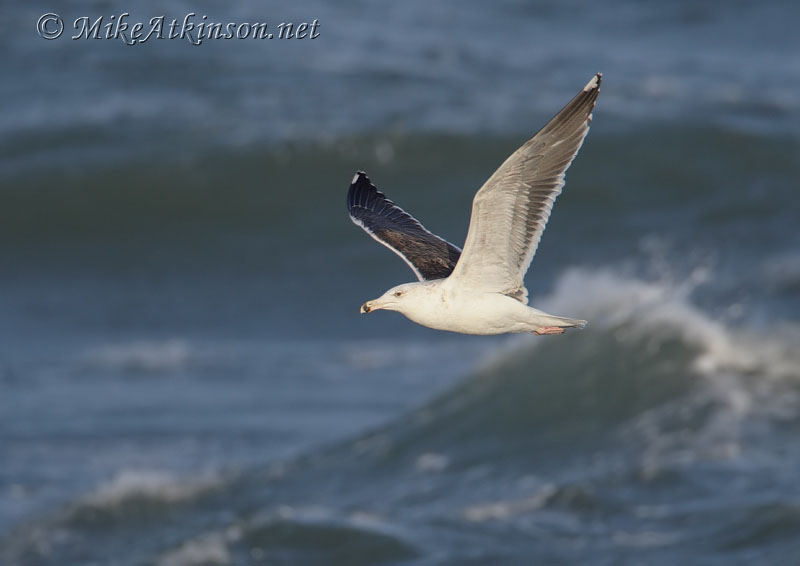
Environment The rough sea in the background of this shot establishes the Great Black-backed Gull as a maritime species.
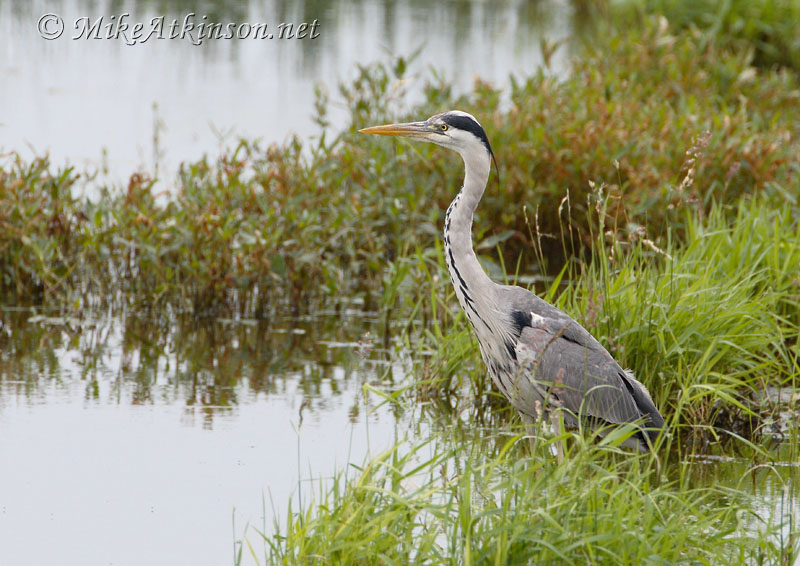
Environment There are many different ways you could depict a Grey Heron, but in this shot the bird looks 'at home' in its natural habitat.
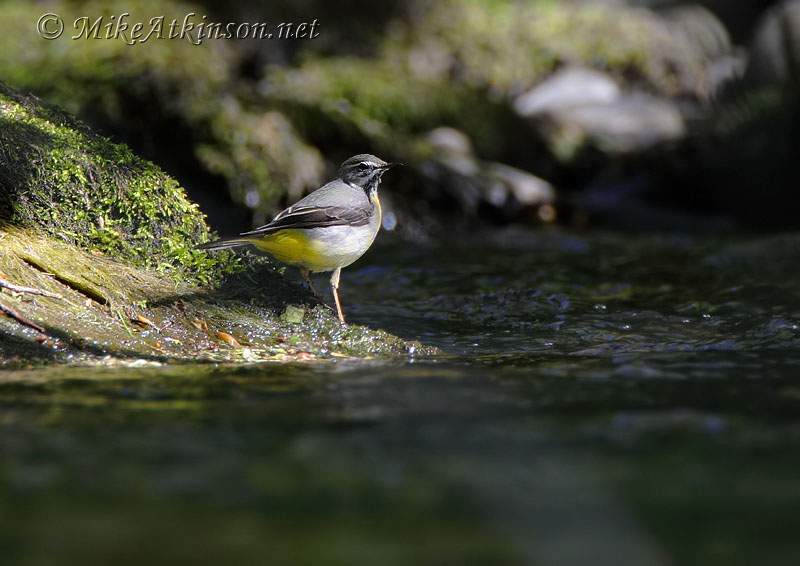
Environment It's not only true 'water birds' that inhabit aquatic environments. Passerines such as the Grey Wagtail spend most of their lives along fast-flowing streams.
For portrait shots, water (especially calm water) can be used to form a uniform, uncluttered background that helps the subject to stand out.
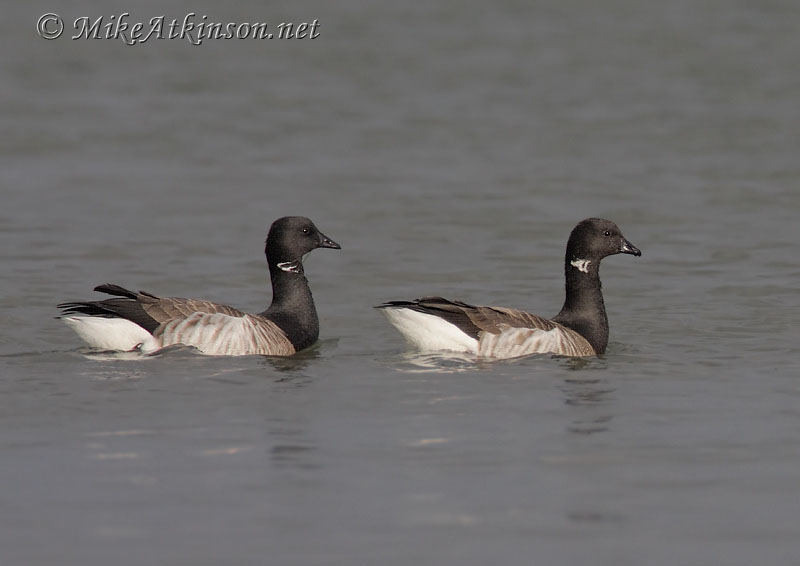
Uniform background In this almost monochromatic image, the mid-tone 'canvas' helps to outline both the light and dark tones on the Brent Geese.
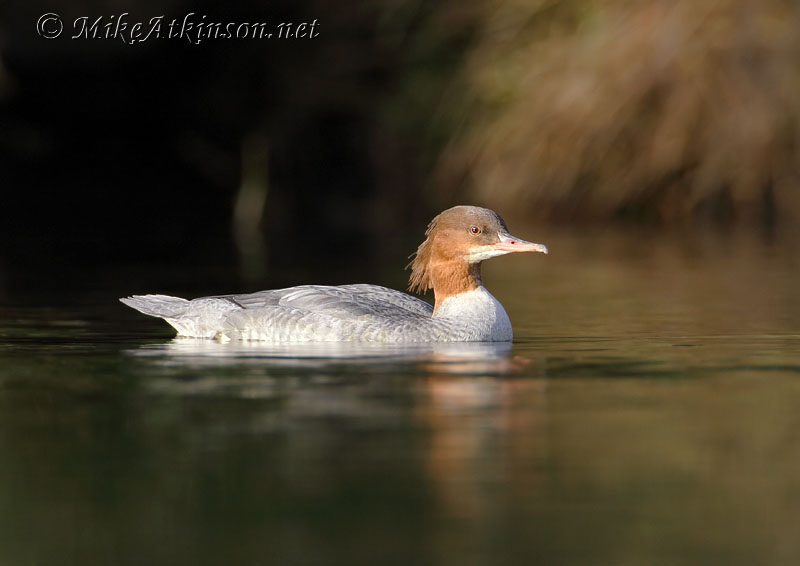
Uniform background In this image, the background is so dark that even the mid-tone body of this Goosander stands out clearly.
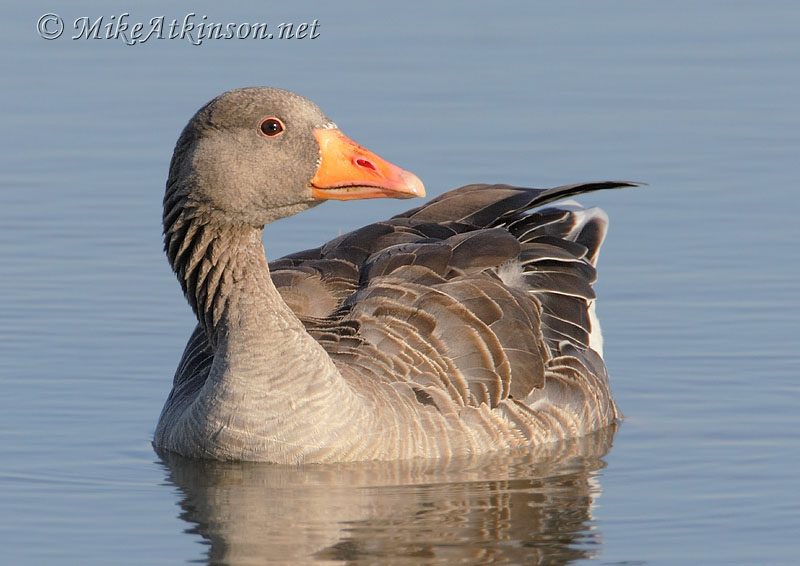
Uniform background Even in this less contrasty image, the plain background ensures the form of the Greylag Goose is still clearly visible.
As a background, the colour and tone of water can vary hugely depending on what it reflects. This can be used to create backdrops that complement and emphasize the colours in your subject.
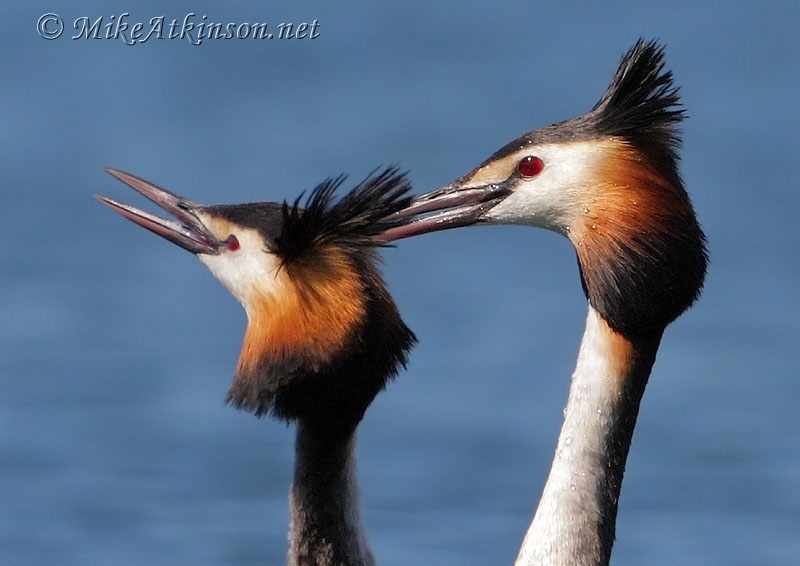
Colour contrast The blue background of the water in this shot (caused by blue sky being reflected off the water) helps to draw attention to the warm hues of the Great Crested Grebes' head plumes and eyes.
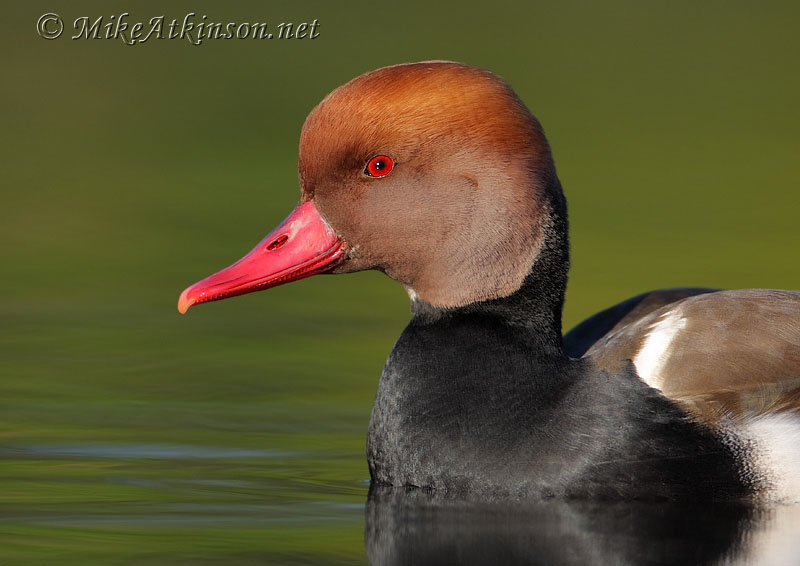
Colour contrast Similar warm colours in this Red-crested Pochard are complemented here by water reflecting rich green vegetation.
The tone (brightness) of the water can also be used to establish different moods in your images...
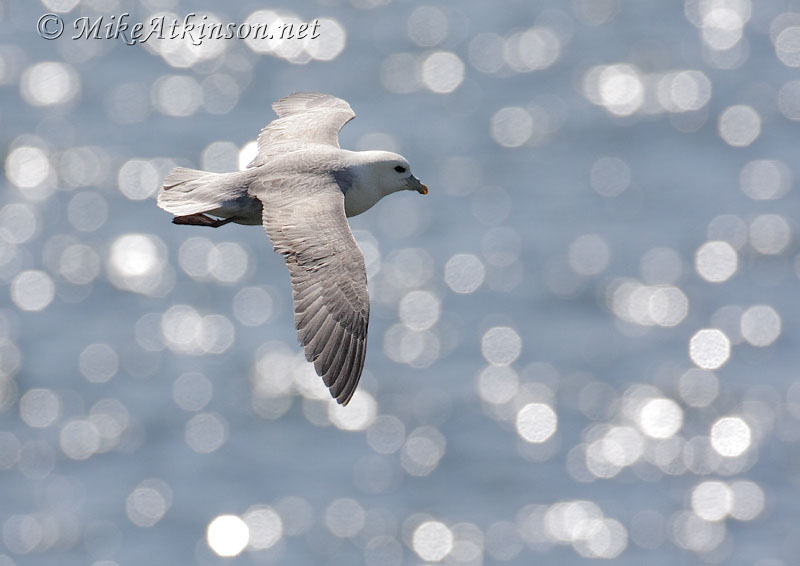
Light tones This shot of a Fulmar was taken towards the sun, causing multiple 'specular reflections' in the surface of the sea. These defocused 'sparkles' (which, incidentally, take the shape of the lens iris aperture - formed by 8 'blades' in this case) give a bright, 'high key' feel to the image.
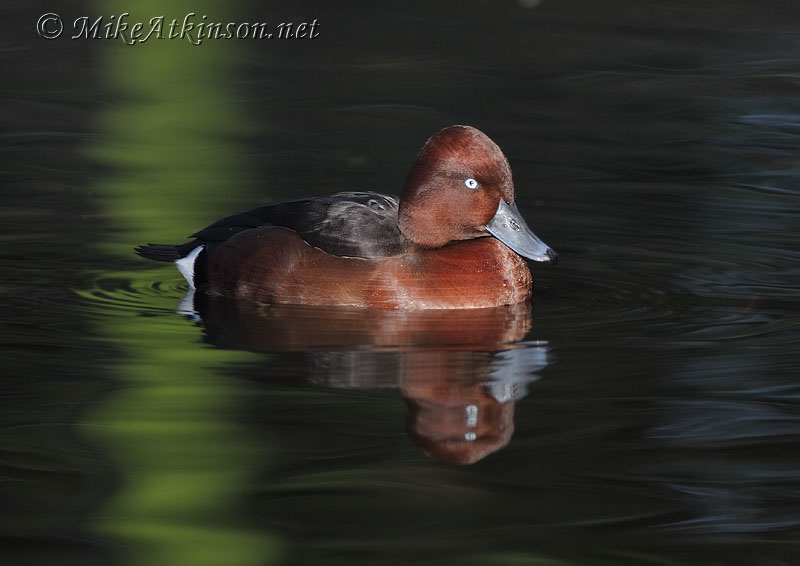
Dark tones This Ferruginous Duck is an almost entirely dark bird that would need a lighter background to form a distinct outline. Here, though, the low-key effect caused by shooting towards the reflection of shaded trees creates a more atmospheric shot.
Mood is also affected by the 'texture' of the water...
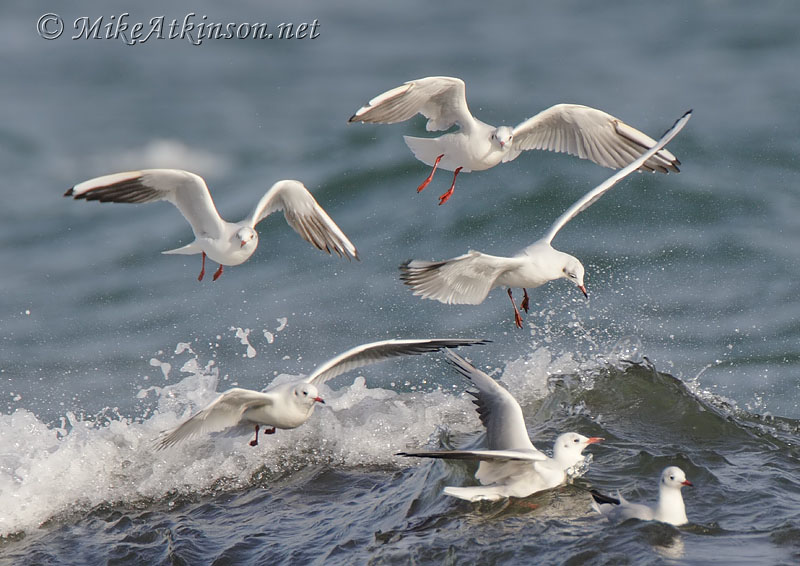
Rough texture The breaking waves amongst which these Black-headed Gulls were feeding add a dynamic feel to the image. In particular, using a high shutter speed to freeze water in an unstable position - such as the spray in mid-air and the wave forming a crest - creates a sense of tension.
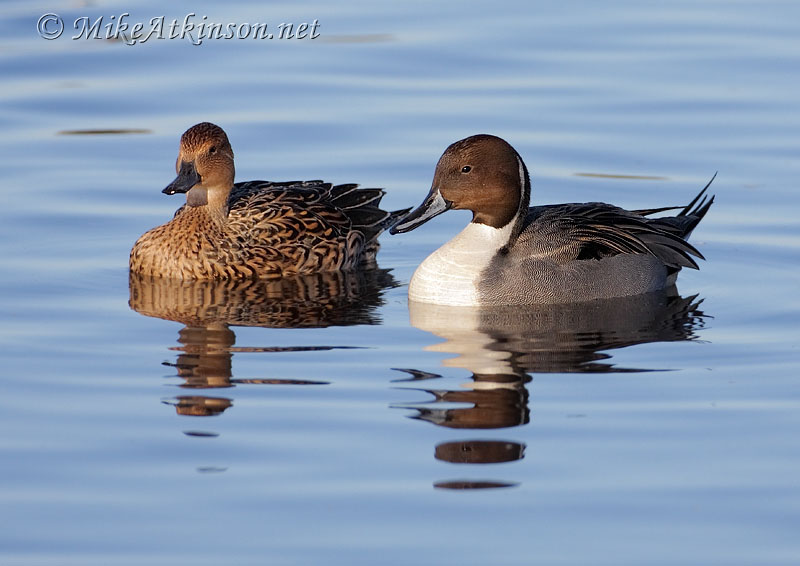
Smooth texture Here, the calm surface and the absence of movement creates an air of serenity (note that the lack of ripples or wakes around the birds confirms that they are just 'sitting').
As an aesthetic point, I would recommend trying to photograph birds against water that has a relatively even tone. Where the water has high-contrast reflections of, for example, background vegetation, the bird tends to become ‘lost’. This can normally be avoided by either waiting for the bird to move into a different spot or shifting your position horizontally or vertically. This will also help you to take well-focused shots as your camera’s autofocus will be less likely to lock on to the patterns in the water.
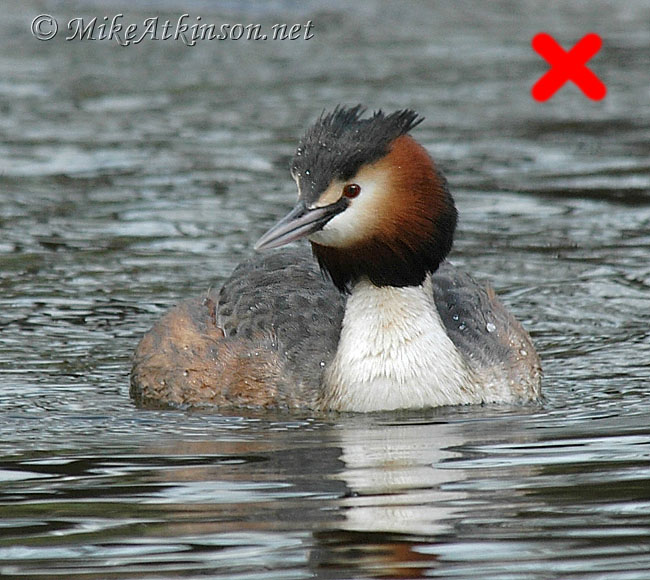
Bad reflections In this shot, the high-contrast (and 'high-frequency') reflections overwhelm the Great Crested Grebe and give a very unpleasant feel to the image.
On a technical note, you need to be particularly careful when processing images featuring water backgrounds as these can be very unforgiving of excessive sharpening or noise reduction. Areas of high contrast such as water ripples or, in particular, water droplets/splashes can easily become over-sharpened, whilst noise reduction software can smooth out low-contrast areas, making them look ‘plasticky’.
My recommendation is to keep your ISO settings as low as possible so that noise reduction is not needed and then to use selective editing to sharpen the bird(s) without risking the background becoming over-sharpened. If light levels are so low that you're forced to use higher ISO settings, you may need to put more work into post-processing to get clean, natural-looking water. I sometimes apply different levels of sharpening and noise reduction to different parts of the water surface.
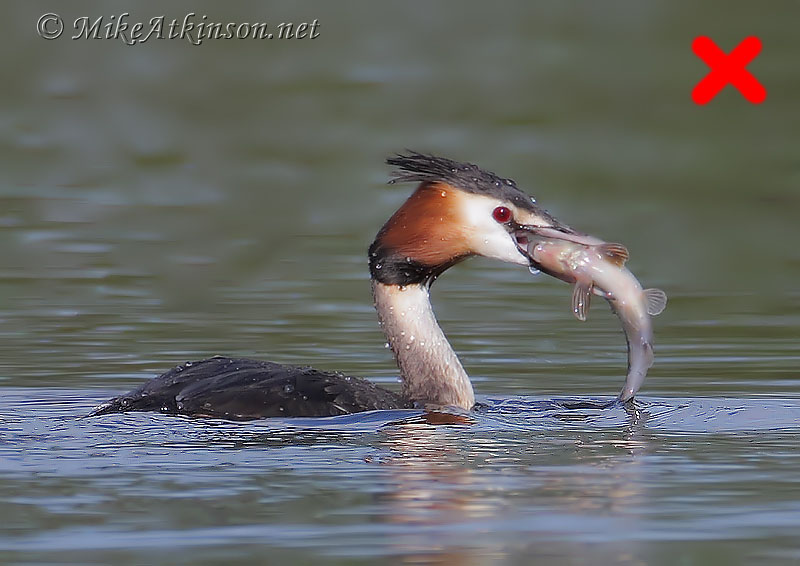
Bad image processing This image shows the effect of excessive sharpening and noise reduction. Note that the ripples that are in focus are too sharp, whilst those in the background have been made to look plasticky.
Finally, it’s worth mentioning that water can be used to create atmospheric silhouettes, especially at sunrise or sunset.
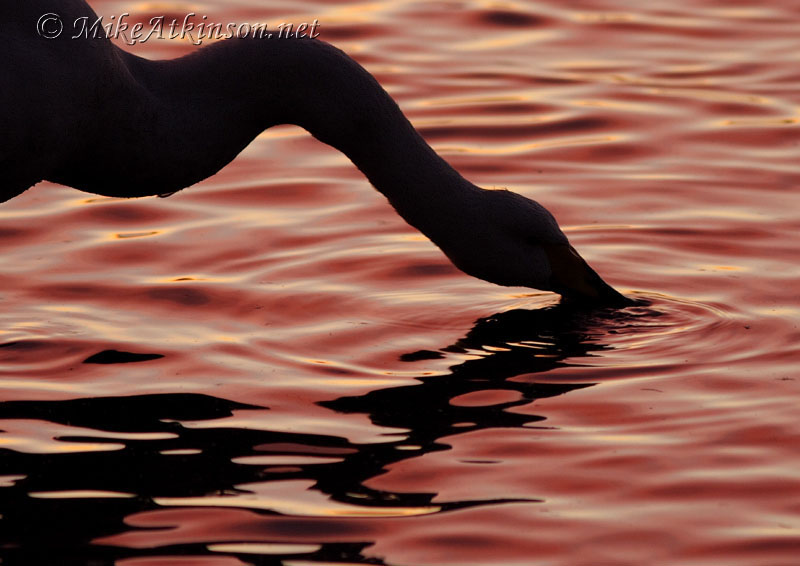
Sunset silhouette The reflection of a beautiful red sunset provided the opportunity for an unusual take on a feeding Whooper Swan. In shots like this, the water becomes the main subject of the image, with the bird being of secondary importance.
Capturing reflections is one of the best ways of adding interest to bird images.
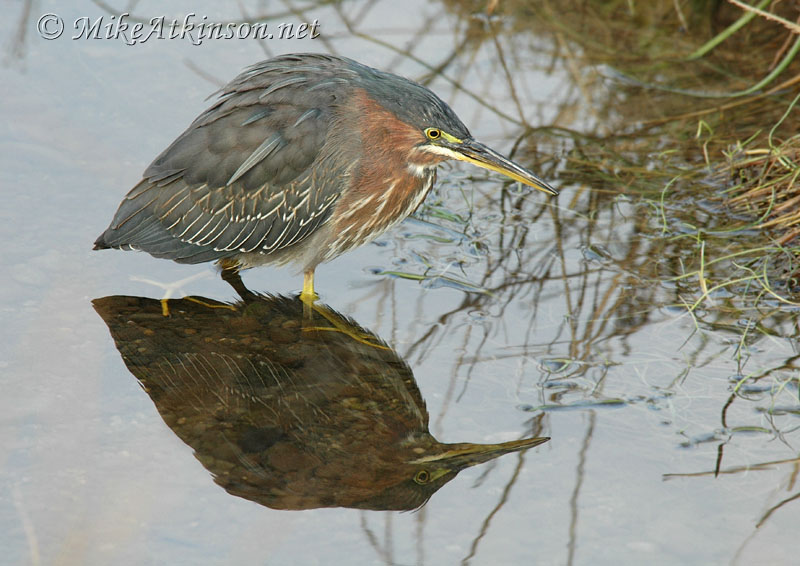
Reflections The sharp reflection of this Green Heron enlivens an otherwise pretty dull image.
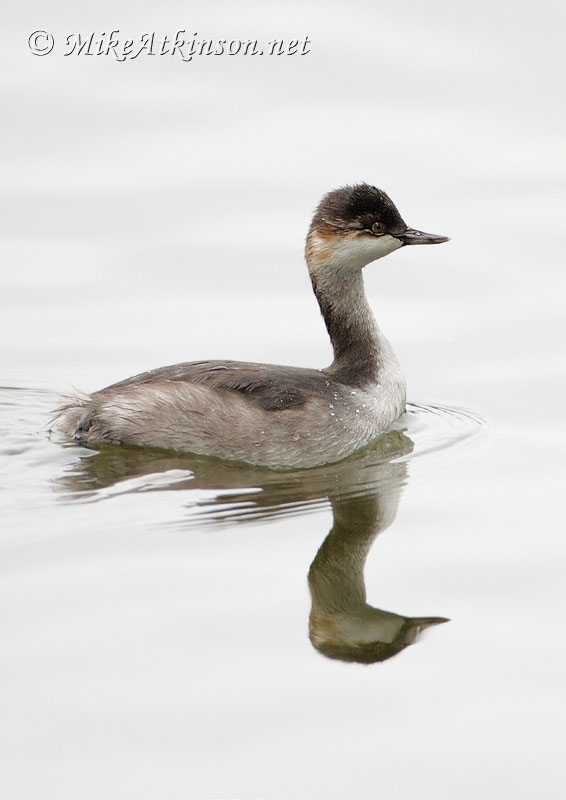
Reflections This juvenile Black-necked Grebe was taken on a very dull, grey day. However, the reflection on the still water gives an interesting overall shape to the image.

Reflections The symmetry created by the reflection of this Moorhen hugely improves the composition of the image.
This technique can be used for flight shots as well as static portraits...

Flight reflections Here, a perfectly-still lake surface provided a mirror for the Spotted Sandpiper skimming the surface.
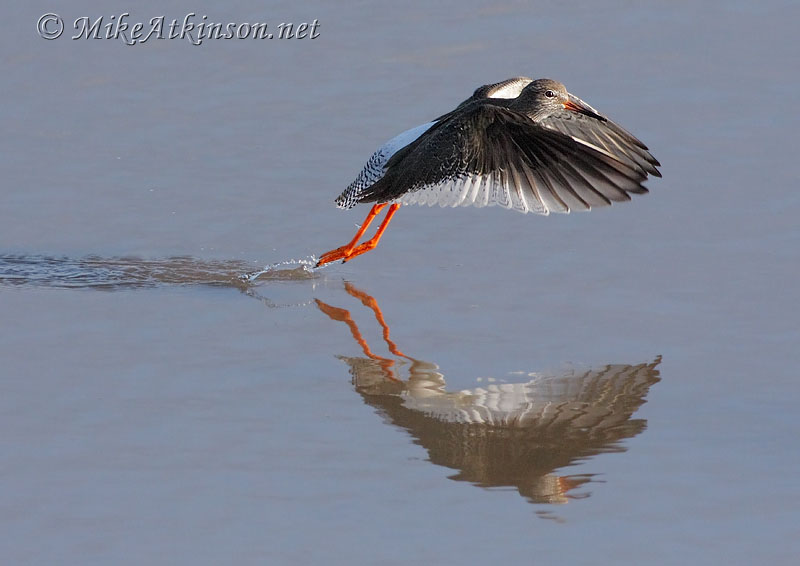
Flight reflections Shallow water covering mudflats similarly mirrored this Common Redshank as it trailed its feet whilst hesitantly touching down (note that images featuring water trails and wakes are often best composed with the bird moving out of the frame to make the most of these compositional elements).
As described in Tutorial 6: Basic Composition, where the reflection is clear, the bird-and-reflection combination should be treated as a single unit when placing the subject within the frame. Where there is no reflection, you should concentrate on the position of the birds themselves and, where there is an indistinct reflection, you can use your own judgment about whether or not to take account of the reflection in the composition.
As a further technical point, it’s especially important with reflection shots to ensure the reflection extends along a true vertical line below the bird. If this was not achieved in camera at the time of shooting, it can be corrected later in your image editor by rotating during cropping.
Before we leave the subject of reflections, there is one more special situation in which reflections can add to the aesthetics of your images. This is where light is reflected up off the water on to the bird itself. As well as filling in shadow areas on the underside of the bird (which softens the unflattering 'top-lit' look), this can throw pleasing bands of reflected sunlight on to the bird.
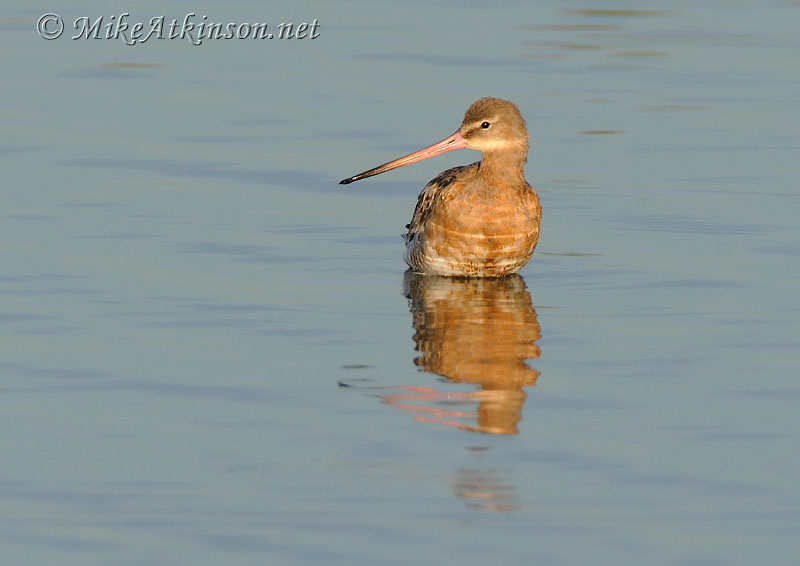
Light reflected on to the bird Notice how the bands of reflected light add sparkle to an otherwise flat image.
In the above examples, water appeared as a solid body such as a lake, sea or river. Another way to include water in your bird images, though, is in the form of splashes and droplets created by the activity of the birds, such as taking off and landing, feeding, bathing and so on.
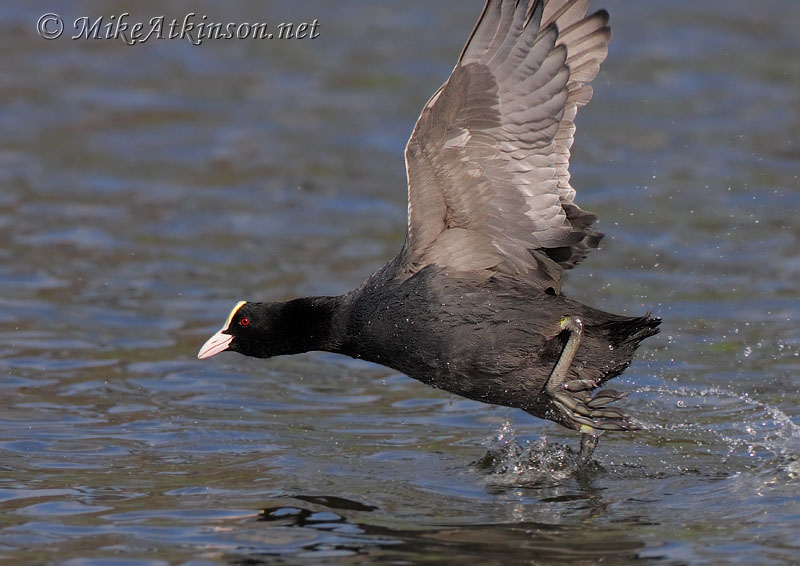
Take-off splashes Many water birds, such as this Coot, need to patter along the surface of the water to reach take-off speed, providing opportunities to capture a dynamic shot. Here, I used a fast shutter speed (1/3000th sec) to freeze the action.

Landing splashes When birds land on water, they can create a variety of disturbance effects such as 'bow waves', wakes and splashes. Also, note the reflected light on the underside of this Mute Swan.
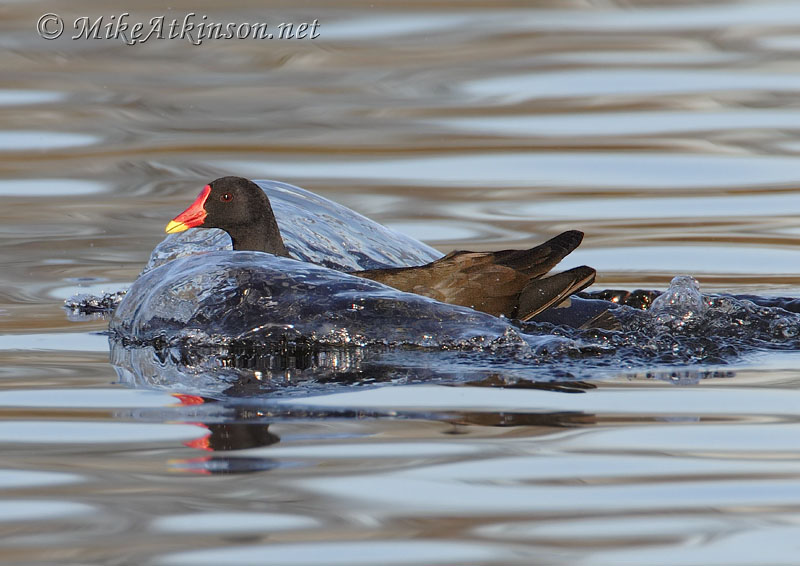
Landing splashes In this case, the landing Moorhen threw up 'walls' of water on either side. I like it when the camera captures such effects that would never be noticeable to the naked eye.
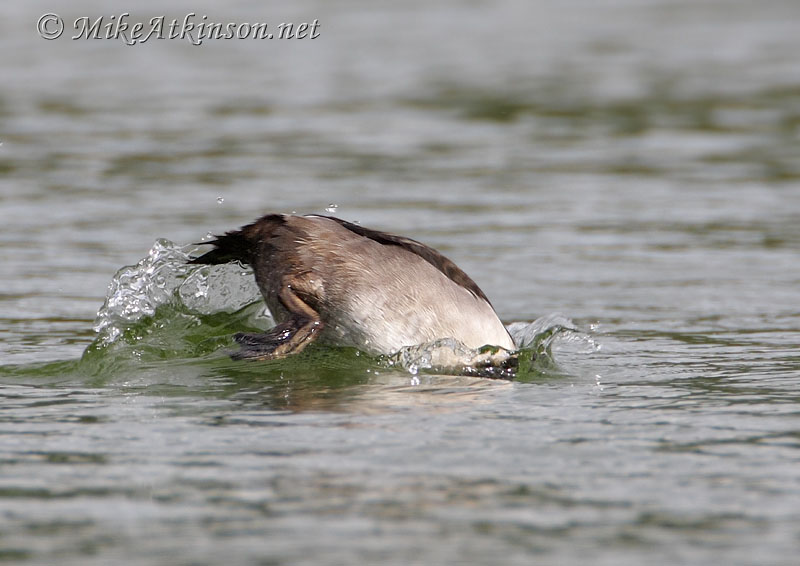
Diving splashes In this case, the splashes are caused by the diving action of a feeding Ring-necked Duck.
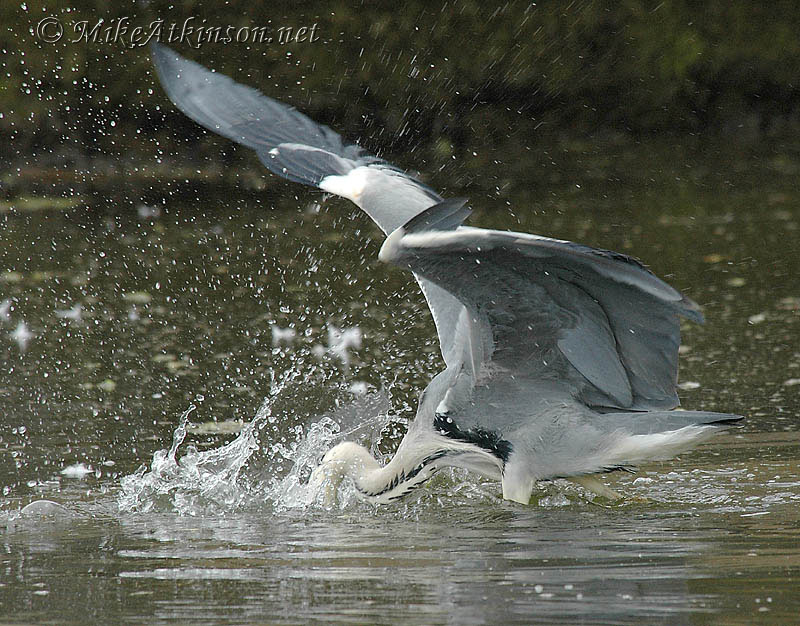
Feeding splashes The powerful strike of a Grey Heron as it spears its prey can throw water droplets several feet into the air.
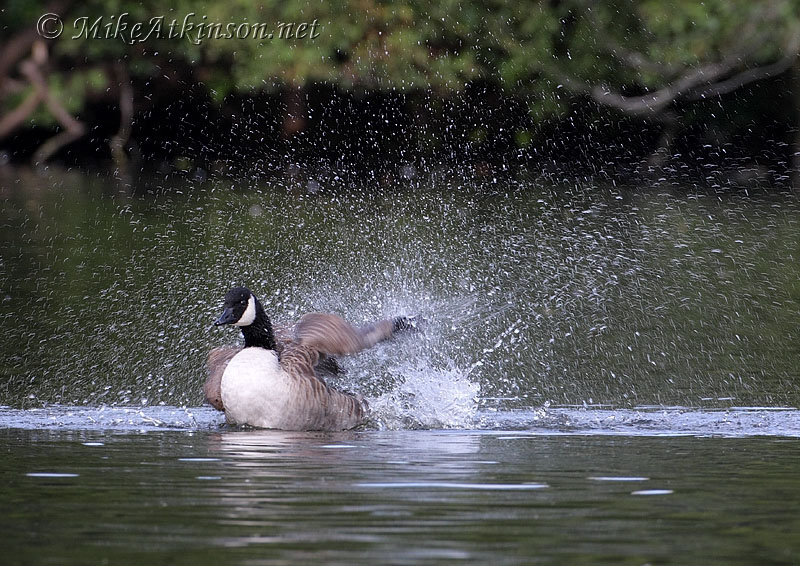
Bathing splashes This bathing Canada Goose was creating a shower of water droplets up to ten feet on either side of it. I deliberately set a slow-ish shutter speed (1/180th sec) to try to capture the droplets as trails.
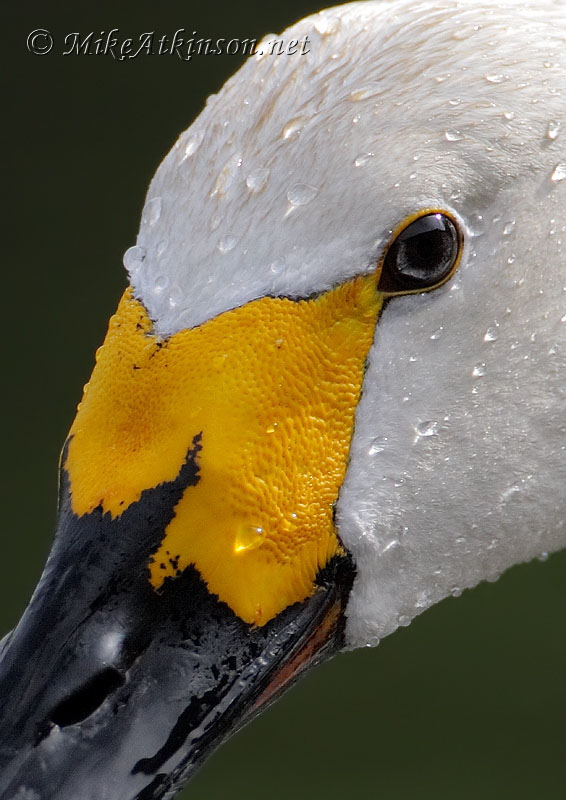
Droplets on the bird Finally, in a more serene example, keep an eye out for opportunities to capture water droplets on the bird itself. The droplets on the face of this Bewick's Swan show up best where the light is catching them from the side, causing a mixture of reflection, refraction and shadow effects.
To end this tutorial, I'll throw in a few more ideas about how you could incorporate various forms of water into your bird photos. To provide examples of these would make the tutorial too long (and there are some of these images I haven't yet got), so I'll just include these in a list:
Include water arising from meteorological conditions: rain, snow, ice, fog or mist.
Birds surrounded by dew in the grass can be especially effective when back-lit.
Include other wet surfaces, such as mudflats or a beach as the tide recedes.
Birds bathing in - or drinking from - puddles or bird baths can work well, again especially when back-lit or where they include reflections.
Freezing birds such as Kingfishers and Gannets as they plunge-dive is challenging, but can make spectacular images.
Similarly for Ospreys/Sea-Eagles grabbing fish using their talons or Swallows/Skimmers breaking the surface of the water with their beaks.
Anyway, I hope I've given you some food for thought about how your bird images can better utilise water as a compositional element.
If you're interested in getting some assistance with your bird photography, contact me. I'd be happy to give advice or to sign you up for one of my Bird Photography Workshops.